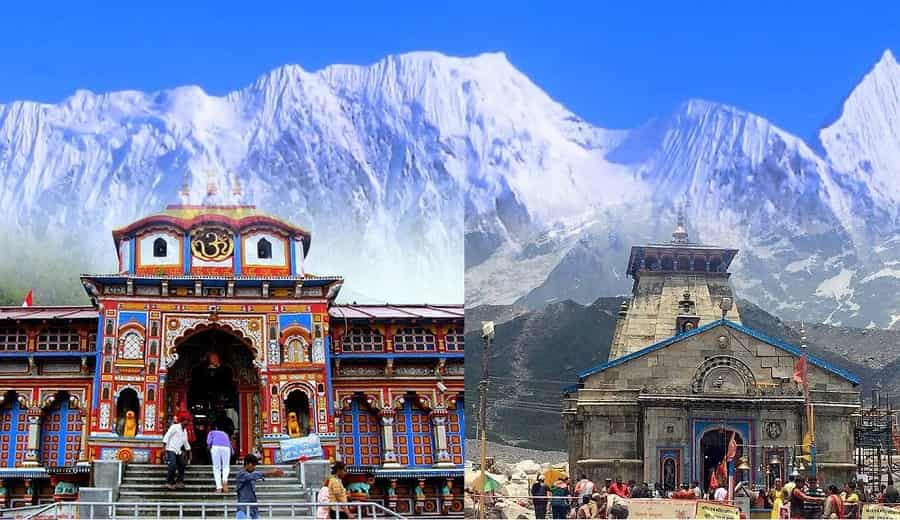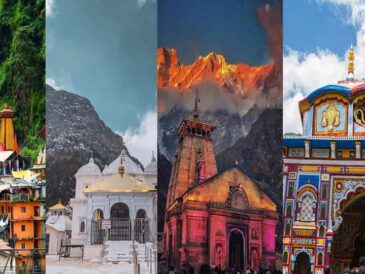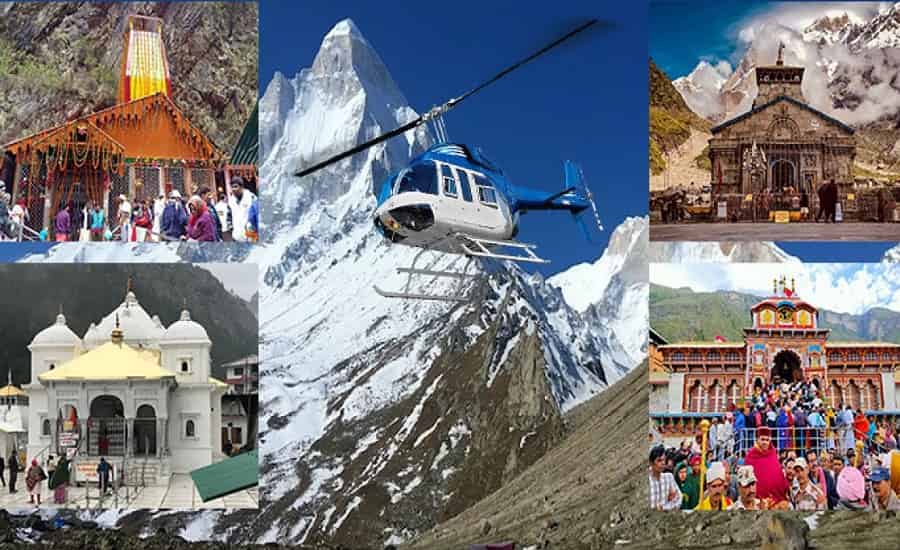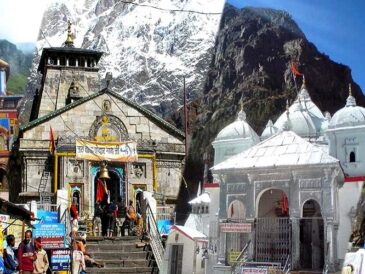Planning a Do Dham Yatra, which involves visiting two of the sacred Hindu pilgrimage sites in the Himalayas, requires careful preparation and attention to detail. The two most popular Do Dham combinations are Yamunotri and Gangotri Yatra or Kedarnath and Badrinath Yatra. This guide will cover the essential aspects of planning such a journey, including logistics, travel tips, and spiritual preparation.

1. Understanding the Do Dham Yatra
The Do Dham Yatra typically involves visiting two of the following sacred sites:
- Yamunotri: The source of the Yamuna River, located in the Uttarkashi district of Uttarakhand.
- Gangotri: The source of the Ganges River, also situated in Uttarkashi.
- Kedarnath: A revered temple dedicated to Lord Shiva, located in the Kedarnath range of the Himalayas.
- Badrinath: A temple dedicated to Lord Vishnu, located in the Chamoli district of Uttarakhand.
2. Best Time to Visit
The ideal time for the Do Dham Yatra is during the summer months, from May to June, and the early autumn months, from September to October. The monsoon season (July to August) and the winter season (November to April) are generally avoided due to the risk of landslides and heavy snowfall.
3. Preparing for the Yatra
Health and Safety
- Medical Check-up: Consult your doctor before the trip, especially if you have pre-existing health conditions.
- Altitude Sickness: Prepare for the high altitudes by staying hydrated and acclimatizing gradually.
- Travel Insurance: Purchase travel insurance that covers medical emergencies and trip cancellations.
Physical Fitness
- Fitness Routine: Engage in regular physical exercise to build stamina. Walking, hiking, and cardio exercises are particularly useful.
- Breathing Exercises: Practice breathing exercises to help with acclimatization and reduce the risk of altitude sickness.
4. Travel Itinerary
Option 1: Yamunotri and Gangotri
Day 1: Arrival in Haridwar
- Travel: Arrive in Haridwar by train or bus.
- Accommodation: Stay overnight in Haridwar.
Day 2: Haridwar to Yamunotri
- Travel: Travel to Jankichatti by road (about 200 km from Haridwar).
- Accommodation: Stay overnight in Jankichatti or Yamunotri.
Day 3: Yamunotri Temple Visit
- Activity: Trek to Yamunotri Temple (approximately 5 km from Jankichatti).
- Return: Return to Jankichatti.
Day 4: Jankichatti to Gangotri
- Travel: Drive to Gangotri (about 250 km from Jankichatti).
- Accommodation: Stay overnight in Gangotri.
Day 5: Gangotri Temple Visit
- Activity: Visit the Gangotri Temple and enjoy the serene surroundings.
- Return: Return to Haridwar or continue to Rishikesh for overnight stay.
Day 6: Departure
- Travel: Return from Haridwar or Rishikesh to your destination.
Option 2: Kedarnath and Badrinath
Day 1: Arrival in Haridwar/Rishikesh
- Travel: Arrive in Haridwar or Rishikesh by train or bus.
- Accommodation: Stay overnight.
Day 2: Haridwar/Rishikesh to Kedarnath
- Travel: Drive to Phata or Sonprayag (about 250 km from Haridwar), then trek or take a helicopter to Kedarnath.
- Accommodation: Stay overnight in Kedarnath.
Day 3: Kedarnath Temple Visit
- Activity: Visit Kedarnath Temple and explore the area.
- Return: Return to Phata or Sonprayag and drive to Joshimath.
Day 4: Joshimath to Badrinath
- Travel: Drive to Badrinath (about 150 km from Joshimath).
- Accommodation: Stay overnight in Badrinath.
Day 5: Badrinath Temple Visit
- Activity: Visit the Badrinath Temple and explore the surroundings.
- Return: Drive back to Haridwar or Rishikesh.
Day 6: Departure
- Travel: Return to your destination.
5. Accommodation and Transport
Accommodation
- Booking: Book hotels or guesthouses in advance, especially during peak season.
- Types: Options range from budget lodges to mid-range hotels and luxury options. Choose based on your comfort and budget.
Suggested Resort for Uttarkashi – Shikhar Nature Resort
Transport
- Local Transport: Use taxis, shared cabs, or buses for inter-destination travel.
- Trekking: Prepare for some trekking, especially in Yamunotri and Kedarnath. Make sure to have sturdy footwear and appropriate clothing.
- Helicopter Services: For Kedarnath, helicopter services are available from Phata, Guptkashi, or Sitapur.
6. Packing Essentials
- Clothing: Pack warm clothing, including thermal wear, as temperatures can drop significantly. Light, breathable clothing for warmer daytime temperatures is also essential.
- Footwear: Sturdy trekking shoes and comfortable sandals are necessary.
- Medical Kit: Include basic medicines for altitude sickness, headaches, and digestive issues.
- Toiletries: Bring personal hygiene items, including sunscreen and insect repellent.
- Documents: Carry ID proof, travel permits (if required), and a copy of your insurance policy.
7. Spiritual Preparation
- Mental Preparation: Approach the yatra with a sense of reverence and spiritual intent. Meditate and pray before starting your journey.
- Guided Rituals: Familiarize yourself with the rituals and customs of the temples you will visit. Participate in the rituals with devotion.
- Respect the Environment: Maintain cleanliness and respect the sanctity of the pilgrimage sites.
8. Local Customs and Etiquette
- Dress Modestly: Wear modest clothing, covering shoulders and legs, especially when visiting temples.
- Respect Local Traditions: Follow local customs and traditions. Remove footwear before entering temples.
- Respect the Environment: Dispose of waste properly and avoid littering in the sacred areas.
9. Emergency Contacts and Safety Tips
- Local Authorities: Keep contact information of local authorities and emergency services handy.
- Emergency Numbers: Know the emergency numbers for medical and rescue services in the region.
- Stay Informed: Stay updated on weather conditions and road closures, especially during the monsoon season.
10. Post-Yatra Reflections
- Share Your Experience: Reflect on your journey and share your experiences with others.
- Spiritual Insights: Take time to meditate on the spiritual insights gained during the yatra.
- Health Check: Get a health check-up after your trip to ensure you are well.
Conclusion
The Do Dham Yatra is a spiritually enriching experience that requires careful planning and preparation. By considering health and safety, travel logistics, accommodation, and spiritual preparation, you can ensure a memorable and fulfilling pilgrimage. Whether you choose to visit Yamunotri and Gangotri or Kedarnath and Badrinath, this journey offers a unique opportunity to connect with the divine and experience the serene beauty of the Himalayan landscape.
Suggested Tour


